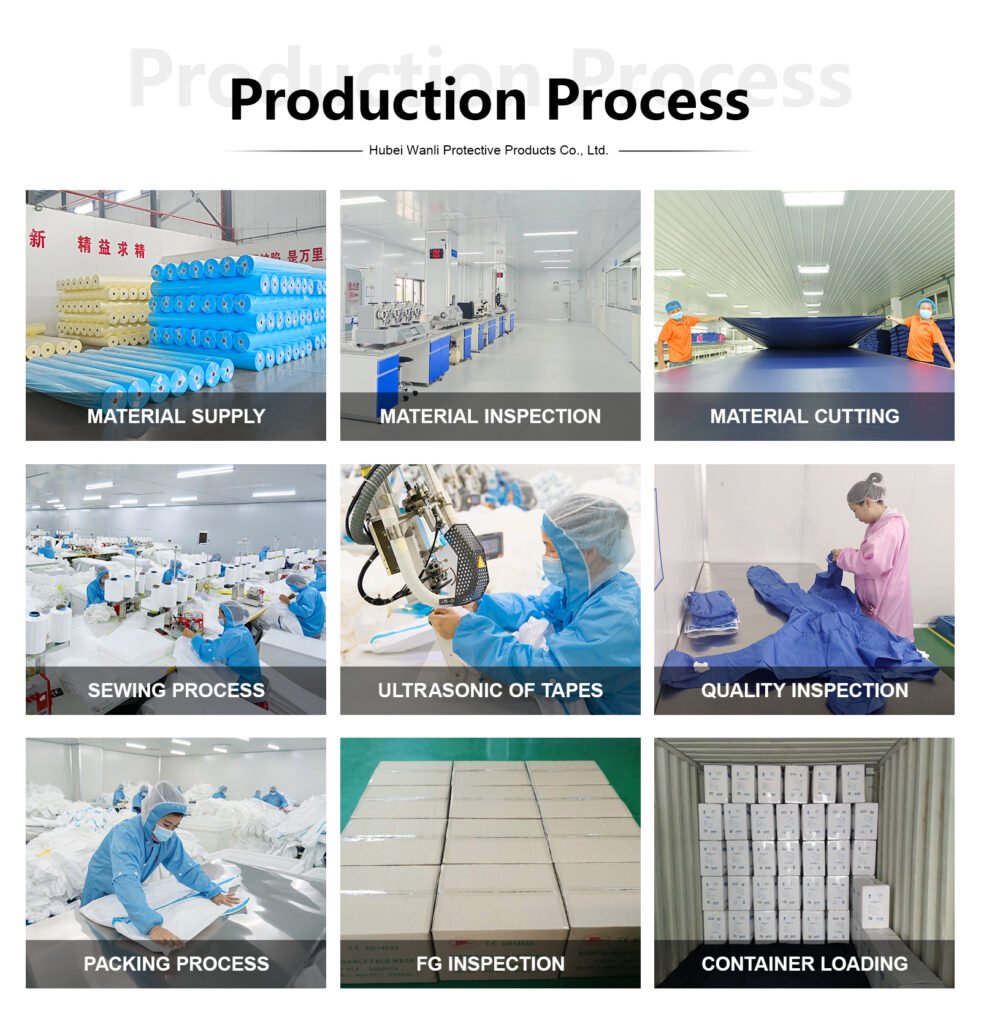Disposable coveralls are an essential part of personal protective equipment (PPE) in many industries, including pharmaceuticals, laboratories, hospitals, and chemical plants. The manufacturing process for disposable coveralls is a complex and multi-step procedure that involves several stages of production.

The first stage of the manufacturing process of coveralls disposable is the selection of raw materials. The primary raw materials used in making coveralls are polypropylene, which is a thermoplastic polymer, and nonwoven fabric. These materials are chosen for their lightweight and breathable properties, which make them ideal for use in sterile environments or where the risk of contamination is high. Some coveralls may also contain additional materials such as elastic bands, zippers, and heat-sealed seams.
The next stage of the manufacturing process is the preparation of the raw materials. The polypropylene is melted and extruded into a long strip, which is then spun into fibers. These fibers are then compressed and bonded using heat and pressure to create a non-woven fabric. The fabric may go through additional treatments, such as embossing or lamination, to give it additional strength, durability, and water-repelling properties.
Once the fabric is prepared, it is cut into pieces using precise measurements. The pieces are then sewn together using specialized machines. The sewing process involves creating seams that are durable and can withstand the movements and stresses of the wearer while also ensuring the maximum protection against particles and contaminants. The seams may be heat sealed, glued, or stitched, depending on the type of coveralls being made.
After the coveralls are sewn together, they are inspected for any defects, such as missing stitches or tears. If any defects are found, the garment is discarded, and the process starts again. Once the garments pass inspection, they are folded, packaged, and shipped to distributors and customers.
Disposable coveralls are also manufactured using automated machines. These machines use computer programs to cut, sew, and assemble the coveralls, resulting in a more efficient and faster process. Automated machines are also more precise and can create coveralls with consistent quality and fit.
The manufacturing process of disposable coveralls is essential to ensuring their quality and effectiveness in protecting against particles and contaminants. The materials used must be of high quality, and the sewing process must create seams that are durable. The manufacturing process also ensures that the coveralls are free from defects and meet the required standards for use in different industries.
Disposable coveralls are a crucial part of PPE in many industries, and their manufacturing process plays a significant role in ensuring their effectiveness and quality. The process involves selecting high-quality raw materials, preparing them and then precisely measuring and sewing them together. The coveralls are then inspected for defects and packaged for shipping. Automated machines may also be used to ensure faster, more efficient production. With proper manufacturing procedures, disposable coveralls can continue to play a vital role in protecting workers from hazardous environments and promoting workplace safety.


